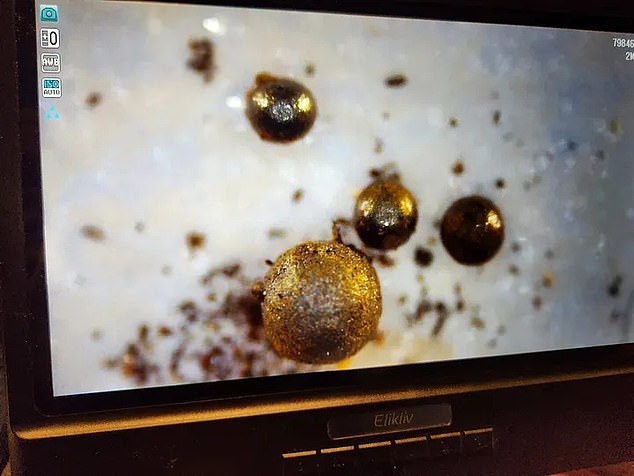Tiny metal fragments recovered from the crash site of a meteor-like UFO that plunged into the Pacific Ocean in 2014 were strong enough to potentially be “some artificial alloy”, according to Harvard physics professor Avi Loeb.
“There is a chance that it’s artificial – that it’s a spacecraft,” said Loeb, leader of the recovery efforts to dredge the fragments off the coast of Manus Island this June.
Loeb, who is also the director of the Institute for Theory and Computation at the Harvard-Smithsonian Center for Astrophysics, stated that the results of this month’s analysis could “definitely” reveal humanity’s “first contact” with aliens.
“I am expecting further news within a month,” Loeb told the Daily Star, adding, “That’s the hope.”
Loeb reports that no less than four research institutions are currently training their scientific equipment and personnel on samples from the recovered metal fragments.
The fragments, 50 mostly iron spheres about 0.1 to 0.7mm in diameter, likely came from an object that originated outside of our solar system — based on analysis by Loeb and a former student as well as scientists with US Space Command.
Loeb’s colleagues in Germany, Papua New Guinea and at two top universities in the United States are now busy scrutinizing the spheres to determine if their atomic isotopes, chemical composition and other details can prove an otherworldly origin.
“We are in the process of finding out, within a month or so, what this meteor was made of and whether it is perhaps technological in origin or not,” Loeb added.
Loeb and his colleagues have taken to calling the object IM1, for “Interstellar Meteor 1”, although it also carries another more technical name with NASA’s Center for Near-Earth Object Studies (CNEOS) meteor catalog: CNEOS 20140108.
IM1 is currently ranked first in terms of material strength out of all 273 fireballs in the NASA CNEOS meteor catalog, an early clue to its scientific value.
“It was moving faster than 95 perecnt of the nearby stars near the Sun because of some propulsion it had,” according to Loeb.
“It was also made of some very tough material,” he continued.
Loeb has left open the possibility that IM1 — which is estimated to have been about 3 ft. in diameter and approximately half a US ton in weight as it burned through Earth’s atmosphere shedding tiny molten metal droplets — might have been an alien probe.
The size of meteor-like object is within the ballpark of humanity’s own probes now sailing deeper into the cosmos, like the Voyager 1 and Voyager 2 spacecrafts, which at the longest points of their high-gain antennas come to a length of 12 ft.
The unmanned exploratory probe Voyager 2 is currently itself an interstellar object, now over 12.3 billion miles away from Earth but still beaming its ‘heartbeat signal’ back to NASA.
“If it’s something like the Voyager spacecraft colliding with the planet, that would appear as a meteor,” Loeb noted, adding, “We will find out.”
